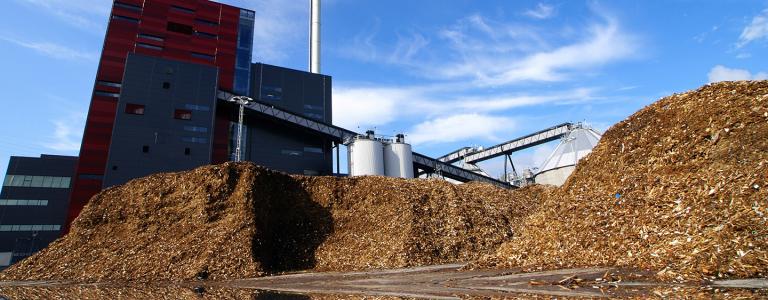Canada Should Copy Europe When It Comes to the Bioeconomy
The recently announced EU Bioeconomy Strategy continues that continent’s legacy of advancing biological solutions to environmental questions and strategically highlights the economic benefits of the approach with a strong focus on jobs, growth and investment.
The recently announced EU Bioeconomy Strategy continues that continent’s legacy of advancing biological solutions to environmental questions and strategically highlights the economic benefits of the approach with a strong focus on jobs, growth and investment in the EU.
In fact, the EU’s bioeconomy already accounts for 4.2% of its GDP; it contributes over €2 trillion in annual turnover and €621 billion in added value, and keeps over 18 million people employed.

The plan is not only concrete—including a €100m Circular Bioeconomy Thematic Investment Platform to bring bio-based innovations closer to the market, and a pledge to build 300 new sustainable biorefineries across Europe by 2030—it also complements an EU directive to ensure that 20% of the EU’s total energy needs are met with renewables by 2020.
In short, the Europeans are significantly ahead of the game.
If Canada were to up its game in the bioeconomy sector, the impact would be significant. In fact, replacing just 5% of Canada’s gas supply with renewable gases would reduce GHG emissions by 10 to 14 megatonnes annually.
We are already moving in the right direction.
The proposed Clean Fuel Standard seeks to increaser use of lower-carbon fuel—including renewable natural gas—and applies to the transportation, building and industry sectors. And the newly-formed Circular Economy Leadership Coalition, a collaboration of major business leaders, academics and non-governmental organizations, are committed to accelerating Canada’s transition to a circular economy.
However, to fully advance a bioeconomy in the country we need a National Bioeconomy Strategy, inspired by the recently updated EU Bioeconomy Strategy, and even the White House’s 2012 National Bioeconomy Blueprint. In fact, this was already recommended by the Canadian Chamber of Commerce in 2015.
The strategy needs to exemplify existing Canadian successes in bioeconomy, but also pave a path for Canada to further pilot technologies and innovations at home and globally—innovations that convert Canada’s abundant bio-waste materials and industrial by-products into fuel, bio-based fertilizers, and high value chemicals while also recycling scarce metals, plastics, and valuable nutrients.
The government of Canada should provide the necessary support, incentives, and guidance, through funding and programs to attract businesses, and develop biorefineries and innovation clusters across the country.
Put simply, a bioeconomy relies on the use of biological products, biomass, and waste materials to be used and converted into food, feed, fuel and more. If you imagine a circular economy, whereby “the value of products, materials and resources is maintained in the economy for as long as possible, and the generation of waste minimized”, a bioeconomy represents the renewable component.
While the recent report from the Intergovernmental Panel on Climate Change certainly sent shockwaves across the world as it warned of the devastating consequences of our current environmental trajectory, it also spotlighted the urgent need to find alternatives to the status quo.
In a world that urgently needs to find alternatives to dirty fossil fuels that emit high rates of greenhouse gases (GHGs) that contribute to climate change, and that needs to move away from the current linear economic model of “extract, use and discard resources”, the bioeconomy proves a highly viable solution.
Canada’s large land base, low population density, and abundance of natural resources have traditionally proven limiting factors in the transition to a bioeconomy future.
With today’s environmental imperatives, however, Canada, which emits high levels of GHGs and has access to an overabundance of waste, residues, and biomass, is perfectly positioned to become a world leader in advancing a bioeconomy.
This article first appeared on EU Reporter on December 12, 2018.
You might also be interested in
Smart-Sourced Fuel Products
Many different types of “waste” or under-used plant materials can be turned into value-added bioenergy fuel products. This brochure, available in both English and French, focuses on such materials available in Manitoba, Canada, including agricultural residues, forestry residues, grassland plants and wetland plants.
For Nature-Based Solutions to Be Effective, We Need to Work with Indigenous Peoples and Local Communities
Nature-based solutions have been praised as a promising approach to tackling the twin crises of climate change and biodiversity loss. But some Indigenous Peoples and local communities are questioning the legitimacy of the concept and what it symbolizes. It is time to listen to what they have to say.
How Can We Work With Nature to Tackle Drought and Desertification?
Drought is one of the most devastating and pervasive challenges exacerbated by climate change. However, we can work to reduce its effects through nature-based solutions for land restoration and climate-smart agriculture.
Canadian Youth Head to Bali for World's Largest Water Forum
Canadian youth join experts in Bali this month for the 10th annual World Water Forum.
